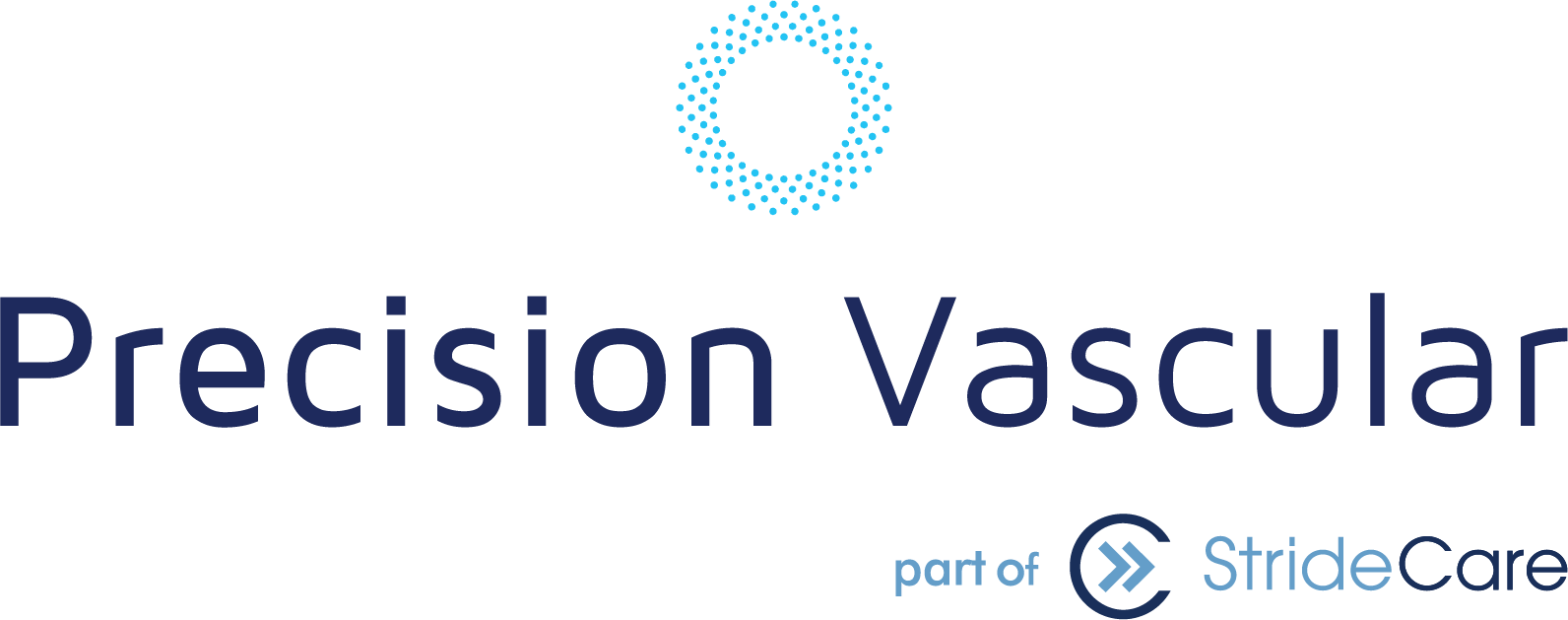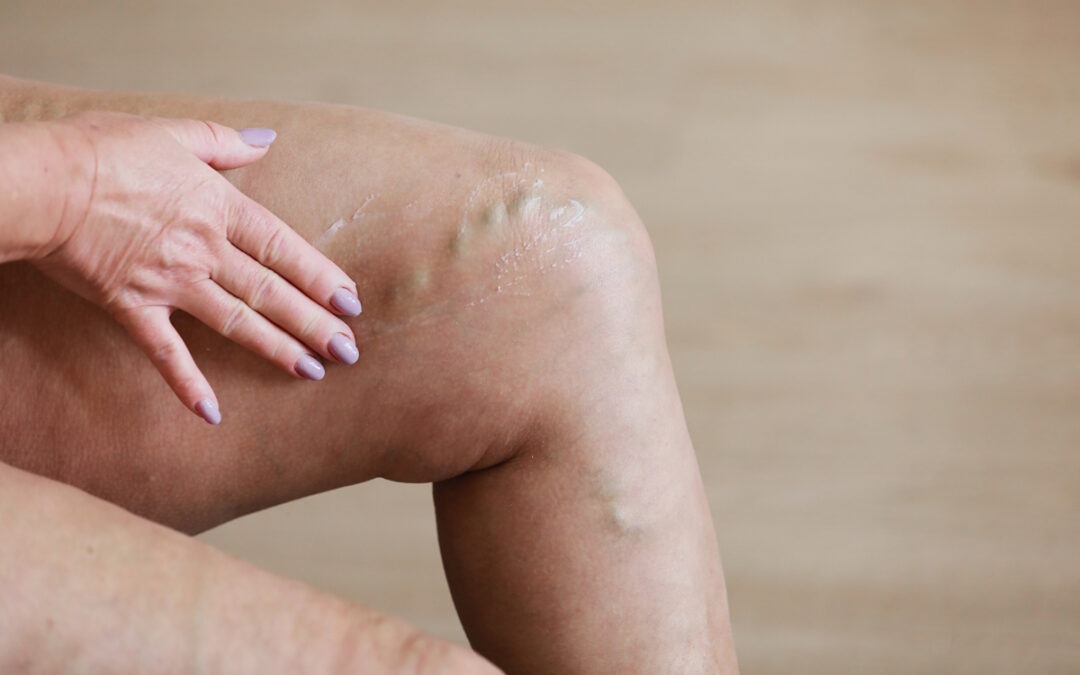You’ve begun noticing an increasing number of varicose veins on your legs and feet. And being the curious person you are, you’ve found yourself scouring the Internet to learn more about the condition. Should I worry? Are varicose veins simply a cosmetic annoyance? What have others experienced? The good news is that most of what you probably found online and from talking to friends is that these bulging, twisted veins are very common, typically painless, and an ugly fact of life. Your friends might have even suggested, “Just wear pants to cover them up. That’s what I do.” But as you dig deeper, you find that they can also be a sign of an underlying vein disease and could have many uncomfortable symptoms, including a burst vein.
While that last part may seem far-fetched, the reality is that untreated varicose veins can rupture. A burst vein can happen in severe, untreated cases of varicose veins if there is a specific injury (scrape, nick, or bruise) or if the vein walls weaken so drastically that they physically rupture and send blood into surrounding tissues and even through the surface of the skin. A burst vein is a frightening and serious problem that can happen suddenly. And if you experience it, you should seek immediate medical attention.
What Should I Do If I Experience a Burst Vein?
- Call 911 and get to the hospital immediately.
- While waiting, take a seat or lie down if you feel faint.
- To reduce swelling, elevate the affected leg.
- Apply pressure to the burst vein site to slow bleeding.
Once you have sought medical attention at a local hospital and the situation is under control, scheduling an appointment with one of our experts at Precision Vascular is important. Our job is to work with our patients to treat symptomatic and asymptomatic varicose veins and their underlying causes.
Are you tired of varicose veins? Request an appointment with Precision Vascular’s specialists. Appointment
What Happens When Varicose Veins Burst
Varicose veins affect roughly 25 million men and women in the United States. Not all of them experience pain or face a life-threatening situation like a burst vein. But vein problems can progress depending on the person and the factors involved—such as having a job that requires you to sit or stand for long periods, excessive smoking, or heredity.
Varicose veins are caused by malfunction and damage of the valves in veins of the lower half of the body. Veins serve a specific purpose of sending blood from the legs back up to the heart. As we age, these veins can become narrow and even malfunction. As a result, blood flows forward but also backward, in the wrong direction (reflux). This flow reversal leads to pooling of backed-up blood, which then causes the veins to bulge, stretch, and enlarge. As a result, varicose veins that start off as small and seemingly harmless spider veins can multiply, bulge, stretch, and enlarge.
This can lead to a variety of painful symptoms, including but not limited to:
- Tired, heavy legs
- Throbbing or stabbing pain
- Unexplained leg swelling in your feet and ankles
- Numbness and tingling
- Visible spider veins or varicose veins
- Muscle cramps
- Skin sensitivity (itching, tenderness, rashes)
- Discomfort when sitting or standing for a long time
- Burning sensations
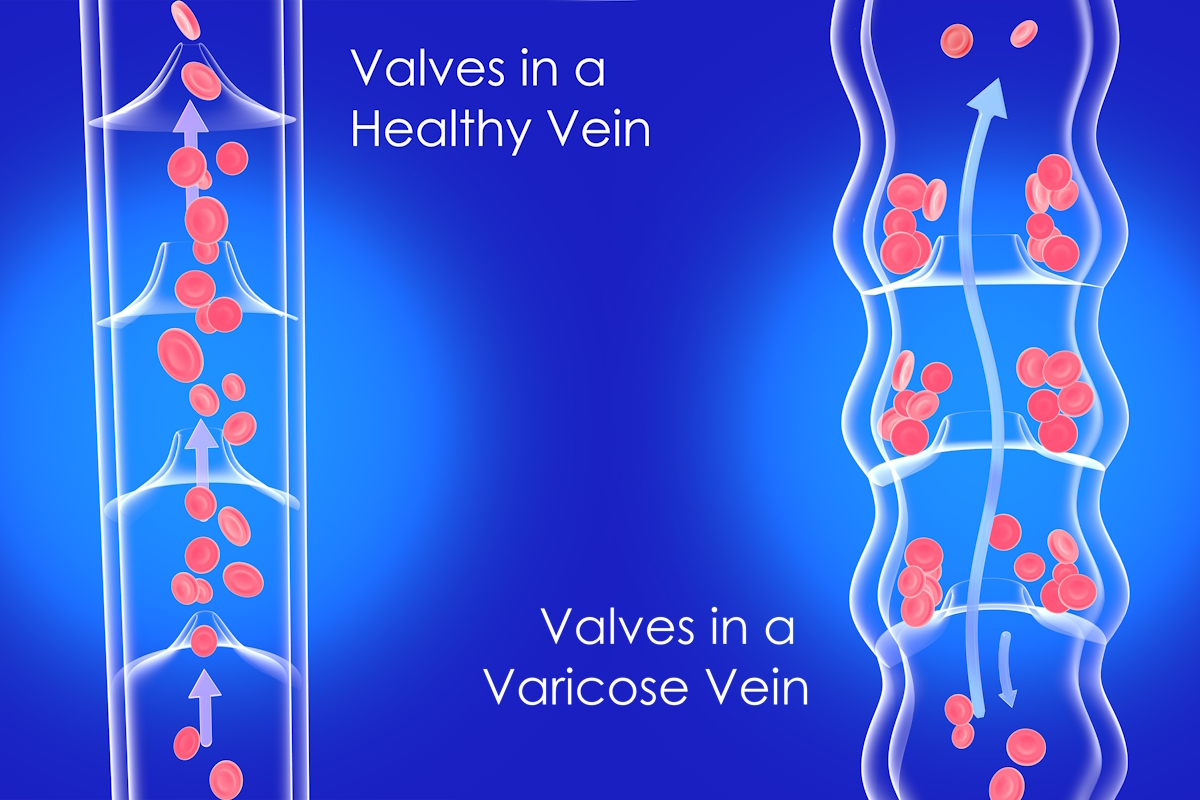
In rare cases, varicose veins can get so large and twisted that they become vulnerable to rupture. These ruptures can happen suddenly and without provocation due to weakened or damaged valves, or they can burst from something as simple as a solid bump against a nearby coffee table or an injury such as a skin laceration. Being overweight or pregnant also puts excess pressure on your veins, as do situations where you constantly sit or stand for prolonged periods—thus limiting blood flow.
What happens when varicose veins burst depends on the type—internal or external:
Internal burst vein
Since the affected vein is filled with blood, the first thing you’ll experience when it ruptures is internal bleeding. This is because the skin is not broken or compromised, so the blood stays inside your body. That said, you will notice visible bruising, swelling, and red or purple skin discoloration as the bleeding expands into surrounding tissue. Many patients also state that the affected site is tender to the touch.
The bleeding at the site of the burst vein will be profuse and steady and may not stop without medical intervention. As a result, many people suffering from a burst vein may experience fainting and dizziness.
External burst vein
An external burst vein is exactly what it sounds like and can only happen if the skin near the affected vein has been broken and displays an open wound. There are a variety of ways this can happen, including unintentional cuts, scrapes, abrasions, and lacerations. The skin near the affected area could also be extremely thin and may break open on its own without something else causing it.
Since there is so much pressure built up in the burst vein, you will experience a good amount of bleeding that may appear as though it can’t be slowed or stopped.
Precision Vascular can help you overcome painful varicose veins. We have expert vascular doctors near you. Appointment
How Do You Treat a Burst Vein?
One question we hear is “can I die from a burst vein?” Since a ruptured varicose vein can lead to significant blood loss, it is possible that someone could die if the situation were severe enough. That said, this is typically only the case if the person does not receive or seek out immediate medical attention. A burst vein is treated initially by placing consistent pressure at the affected site with a clean towel or cotton cloth to slow the loss of blood. Additional treatment at the nearest emergency room will help stop the bleeding and prevent it from happening again.
It is important to note that once a burst vein happens, it will happen again if left untreated.
Varicose vein treatment options include:
Sclerotherapy
Either the hospital or one of our specialists injects a specially formulated chemical solution full of sclerosing agents (either in liquid or foam form) into the affected veins through a small skin nick. This solution irritates the vein walls and causes the vein to collapse and disappear, safely and effectively helping you find vein pain relief.
Sclerotherapy only takes between 15 minutes to an hour. It is also versatile enough to treat mild to moderate varicose veins and improve the appearance of spider veins on the thighs, calves, and feet. Ideally, you’d want to treat varicose veins before the threat of a burst vein. Sclerotherapy is one option.
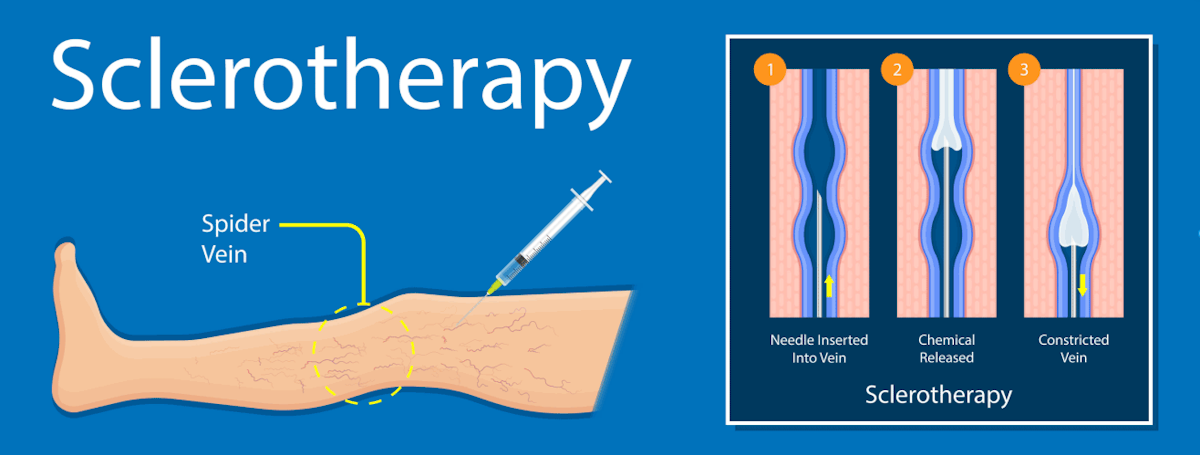
Microfoam Ablation
Microfoam ablation is another minimally invasive way to treat varicose veins, and, at first glance, appears similar procedurally to sclerotherapy. But unlike sclerotherapy, which is best suited for small and medium vein issues, microfoam ablation treats larger, tortuous (twisted) veins as well as veins above and below the knee, and even veins that were previously treated with other methods that were not as effective.
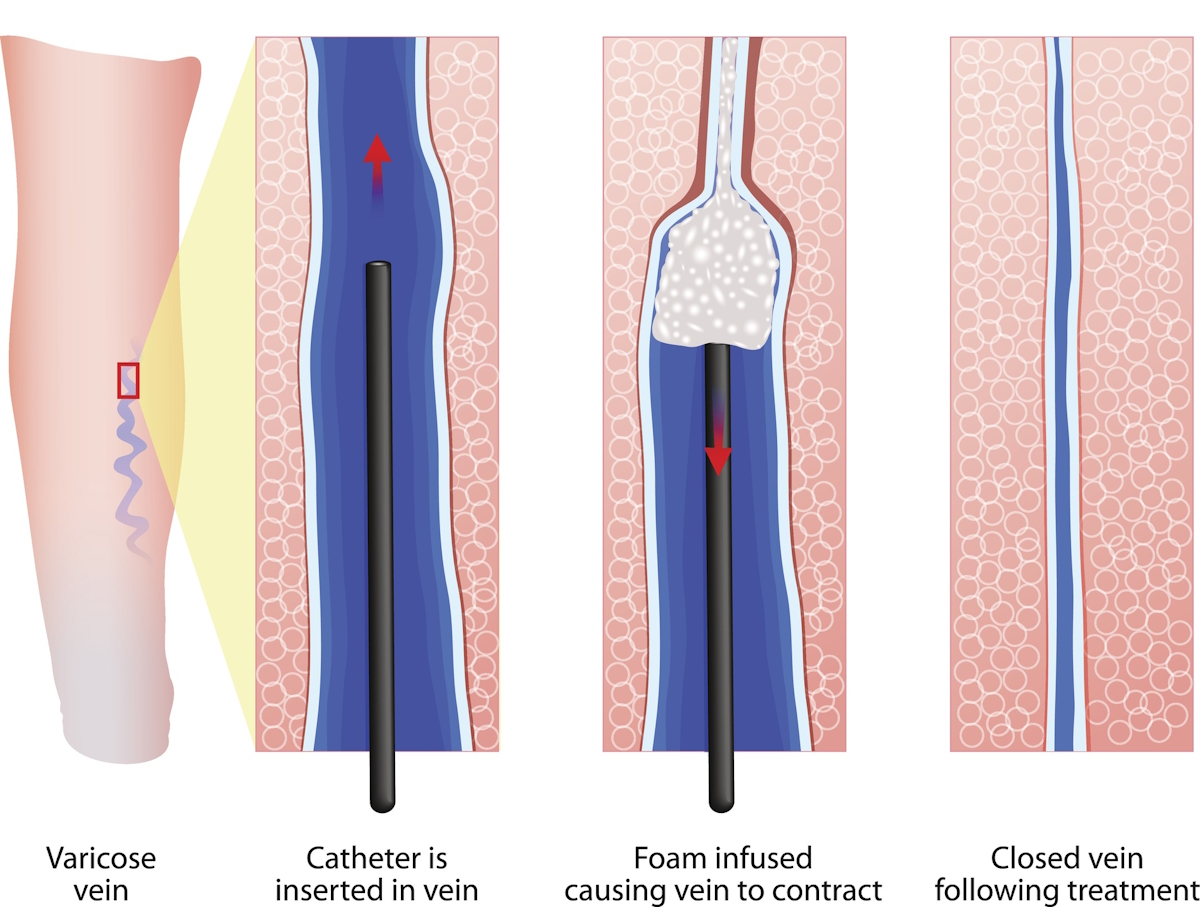
With this procedure, your specialist injects a special microfoam in your affected veins to relieve symptoms without the use of heat or tumescent. The foam fills the desired section of the vein, and the diseased vein collapses. Blood flow then shifts to healthier veins nearby.
Radiofrequency Ablation
This procedure is done with just a needle stick. A thin catheter is inserted into the diseased vein, through a small puncture that does not leave a scar. Under ultrasound guidance, the catheter is guided up into the great saphenous vein in the thigh or the small saphenous vein in the calf. The radiofrequency energy is delivered to the inside of the vein, heating and sealing the vein closed. Like sclerotherapy, radiofrequency ablation takes less than an hour to complete, and the minor side effects include swelling, bruising, and tenderness around your treated area.
Radiofrequency ablation is a good option for patients who suffer from mild to moderate varicose veins as well as those who need relief from enlarged veins that have filled with blood.
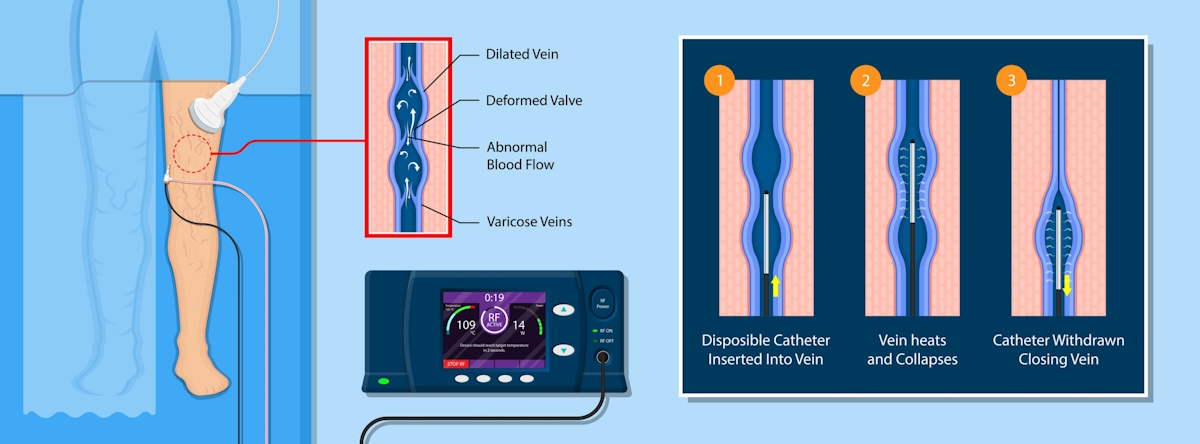
Precision Vascular Is Your Varicose Veins Expert!
If you are starting to notice varicose veins on your legs and feet, it is important to have them looked at by a team of experts who work with varicose veins every day and have the best treatment options to resolve them for good. Even if you aren’t experiencing any pain or uncomfortable symptoms, your varicose veins might not stay that way. And if left untreated, they could result in a burst vein. Early intervention can help avoid painful symptoms such as tired and heavy legs as well as eliminate the threat of life-altering blood clots, ruptured veins, etc.
And the good news is that finding someone to help in your area is easier than ever. Precision Vascular has long been a leader in performing leading-edge procedures to treat artery and vein disease and symptoms that, while minor in their earliest stages, can eventually lead to more serious and life interrupting issues. The experts at Precision will recommend an individualized plan to help you get the best results.
For a consultation with one of our expert doctors, please contact us at 866-552-4866 or complete the appointment form. We are here to help, all while providing compassionate patient care.
AppointmentPrior to starting any new treatment or questions regarding a medical condition, always seek the advice of your doctor or other qualified health provider. This information is not a substitute for professional medical advice.
Precision Vascular serves the D/FW area including Dallas, Mesquite, Craig Ranch, Sherman, Dennison, Arlington, Fort Worth, Southlake, South Dallas, North Dallas, Addison, Carrollton, Richardson, Garland, Highland Park, University Park, Park Cities, Plano, Frisco, Prosper, Allen, McKinney, Irving, Grand Prairie, Denton, Lewisville, Flower Mound, HEB, Hutchins, Duncanville, DeSoto, Cedar Hill, Lancaster, Cockrell Hill, and all North Texas.
*Patient stories are true. Names and/or photos may be changed to protect patient confidentiality.
